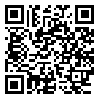BibTeX | RIS | EndNote | Medlars | ProCite | Reference Manager | RefWorks
Send citation to:
URL: http://irj.uswr.ac.ir/article-1-254-en.html
Objetives: Recovery of upper limb motor function in stroke is limited. Different approaches are used to improve the upper limb function, but none has satisfactory results. The present study investigated the effect of task related training and role of hand dominance in upper limb motor function rehabilitation in stroke population.
Methods: A convenient sample of 32 subjects divided into 4 groups with 8 subjects each took part in the study with an experimental design. The group 1, experimental dominant hand group, consisted of subjects with dominant hand paresis, the group 2 consisted of subjects with non dominant, group 3 & 4 consisted of dominant (dominant hand control group) and non dominant hand paresis (non dominant hand control group) .The group 1 and 2 received task related training and conventional therapy, while group 3 & 4 received conventional physiotherapy. All patients were assessed prior to training 4 weeks & after the 4 weeks of training program by using Chedoke Arm & Hand activity Inventory Score form, this score were used to find the difference between and within groups.
Results: A within group analysis showed that there is a statistical significant difference for Chedoke Scores between pre training and post training in group 1, 2 and 3 but no significant difference in group 4. There was no significant difference between group1 post training scores there was a significant difference in post training scores group 1 and group 3. There was no significant difference in post training scores between group 3 and group 4. The comparison between group 2 and 4 group showed no significant difference in post training scores.
Discussion: From this study it is evident that task related training and hand dominance play an important role in upper limb rehabilitation.
Received: 2011/07/7 | Accepted: 2011/08/19 | Published: 2011/10/1





